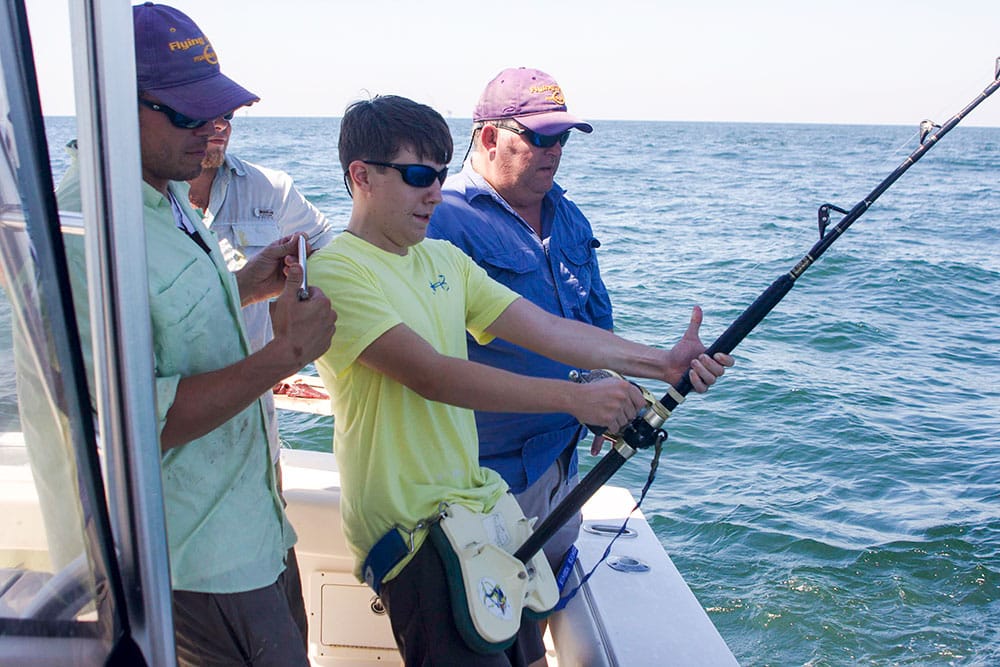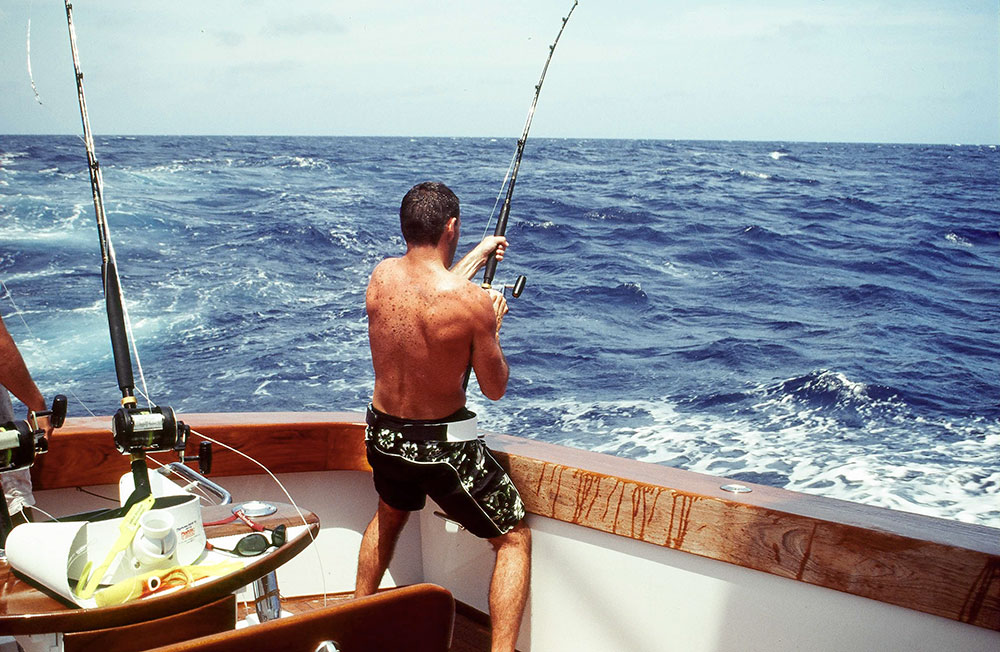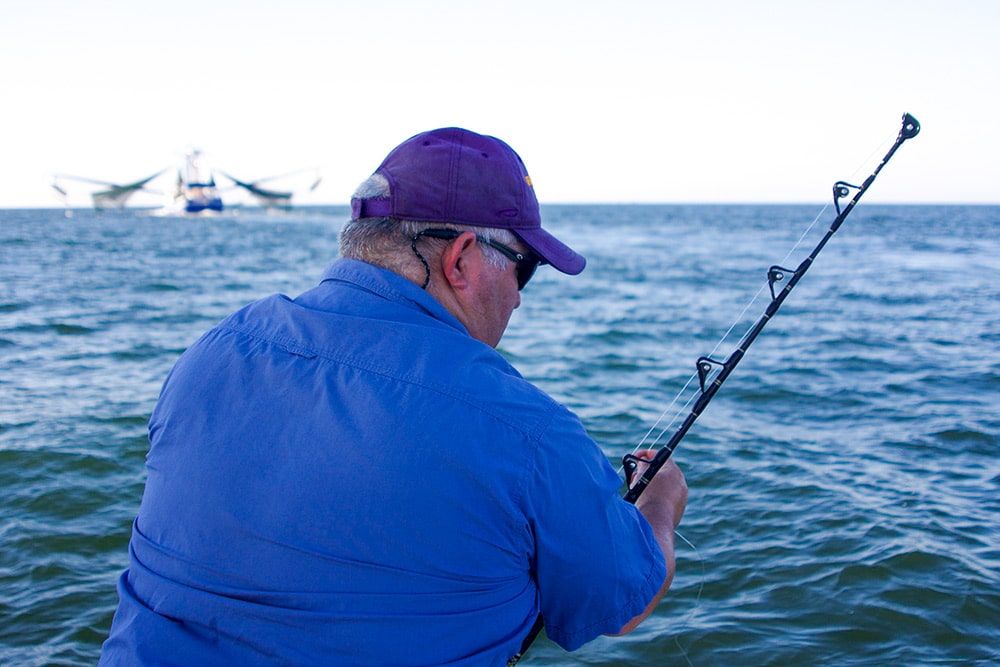
Big game pioneers Zane Grey and Ernest Hemingway wouldn’t have thought about going offshore to challenge marlin, tuna and swordfish without fighting chairs, rudimentary as they were. But then again, they were using rods as big as broomsticks, heavy linen line and reels the size of small industrial winches. They needed chairs just to support those cumbersome outfits.
Offshore tackle has evolved considerably in the last 85 odd years, and the subsequent improvements led directly to the chair-less style now known as stand-up. First developed by West Coast anglers aboard long-range head boats with high freeboard and no chairs, the typical stand-up system uses specialized rods, large capacity reels and personal harnesses to whip big fish.

Leverage is the key. Standup rods are short and stout with notched butts that fit into a gimbal belt worn across the upper thighs. The angler grasps the rod well above the reel seat and the triangle formed between the arms, body and rod allows considerable pressure to be exerted on the fish using the gimbal as the fulcrum and the rod as a lever. Back-supporting kidney harnesses with straps anchored to the reel lugs are usually added when the line exceeds 50 pounds.
Besides the challenge of catching a fish on your own two feet, standup style offers two distinct advantages over conventional fighting chairs: mobility and sensitivity. When you’re not confined to a chair, you can quickly scoot around the cockpit when a fish surges unexpectedly, which they are prone to do, especially towards the end of the fight. Space is another factor. Smaller fish boats or center consoles typically don’t have room for fighting chairs, so standing up is the only option.
Standup gear also allows you to be more in tune with your adversary. The fish’s movements are transmitted directly to your body so you anticipate its next move. As the fight unfolds, a combination of leg-and-hip thrusts in concert with rapid, short-stroke pumps of the rod keeps the fish disoriented and coming toward the boat. Stand-up fights are often shorter than chair battles with comparable fish, and quicker fight times are always preferred whether the fish goes in the cooler or back into the ocean.

Stand-up fishing is not without its caveats. You have to set limits for yourself and your gear. For example, most anglers should stay under 22 pounds of reel drag for safety. If you think you can handle more, tie the line to an immobile object and try keeping the pressure on the bowed rod for 15 minutes while squatting slightly forward with your knees bent, similar to a downhill skier. You’ll probably end up choosing even less drag. Remember, you want to be pulling on the fish, not the other way around. And you don’t want to go flying across the boat if the line breaks.
Getting the Right Fit
• Standup rods, typically 5 ½ to 6 feet long, should be stiff with a flexible, not flimsy, tip. Roller guides are preferred and the butt should be aluminum or slick-finished to slide out of rod holders easily. Make sure the rod foregrip is long enough to provide maximum leverage.
• The gimbal belt should be wide as your upper legs for maximum comfort. And there’s no such thing as too much padding.
• Kidney harnesses should fit snugly around the hips. Too low or too high throws off the angler’s center of gravity.
• Hook up everything—rod, reel, belt and harness to make sure it fits before buying. Everyone is different and standup gear needs to be fit to the individual for comfort and efficiency. The proper standup posture forms a 60-degree triangle. If it doesn’t, try a longer or shorter rod butt or foregrip until you find what’s right for your body.
• Before you start fishing, adjust the harness straps and clips so you’ll be ready when the strike occurs.









